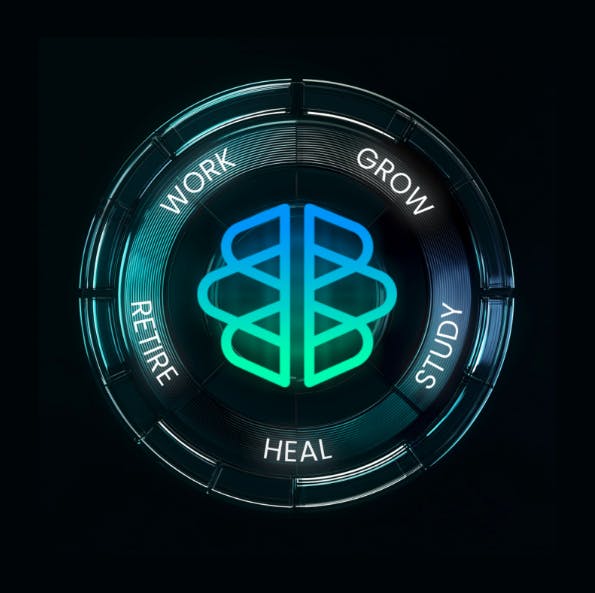Less than five minutes after meeting with Todd Humphrey at a Seattle coffee shop, the longtime tech exec is already sizing up the customer. He quickly assesses how coffee drinkers interact with each other and their technology devices, and wonders why they’ve come to this particular location.
Humphrey has spent decades focused on using technology to enhance the customer experience — from his early days at Kobo working on e-reader services, co-founding healthcare startup League, a CEO stint at project management company LiquidPlanner, and more recently as an exec with the Seattle Kraken, where he was senior vice president of innovation and fan experience.
Humphrey left the NHL franchise earlier this year to embark on a new adventure: Highmark Sports Group, his own consultancy aimed at helping sports teams, leagues, and companies boost their operations.
The Canadian native and former professional hockey player isn’t straying far from Seattle’s hockey scene. He’s a senior advisor for the Seattle Torrent, the new women’s pro hockey team that plays its first-ever home game tonight at Climate Pledge Arena. He’s also working with the Hockey Hall of Fame in Toronto.
We recently caught up with Humphrey to learn more about his approach to helping organizations improve their customer experiences and how to balance new technologies like artificial intelligence with essential human touches. The interview was edited for clarity and brevity.
GeekWire: Todd, thanks for speaking with us. How are you thinking about technology and the customer experience in 2025?
Todd Humphrey: “I’m old enough to remember what the experience used to be like. You’d read about a game that was happening that night in the newspaper. You’d show up, you’d walk in, it would smell like stale beer and popcorn, and there’d be peanuts on the floor. They would play the national anthem and the game would start.
The in-venue fan experience has totally been revamped. Technology plays a huge part of that. I think about the door-to-door experience, and all the different touch points. From the moment someone wakes up, they’re going to check the app to see who’s playing. You can tell them the best way to get to the game and where to park.
Once they walk through the doors, you’re thinking about lines. The average NHL fan spends more than one hour standing in lines during the three-hour experience. We tried to cut that by more than half, and I think we got there.
You want to get people to, from, and through the venue in a really efficient manner. Technology helps with some of that — digital ticketing, way-finding, mobile ordering, mobile payments.
We really used that Amazon approach of the customer experience and working backward — at the end of the day, what are all the friction points, and how do we alleviate those?
There’s a huge opportunity for other teams and organizations to really rethink their experience. And it’s not just sports teams. It’s when you go to a concert, when you go to the Hockey Hall of Fame — what does that feel like? How do we turn it into a more of a holistic, overall experience beyond the time you spend in the building?”

GeekWire: How do you thread the needle of incorporating technology and automation — but also focusing on the human elements of an experience?
Humphrey: “Technology is a vessel that you have to use because it’s expected and it’s really convenient. Everybody’s got a computer in their pocket, sitting in their hand, and if you can use it in the right way, it’s a great leverage point.
At the same time, I don’t want to see teams and leagues and companies get too hung up on the tech, because I think little things like the human interactions matter.
When you walk into an arena for a concert or a game, you’re going have a touch point with ticketing and security before you get inside. If those interactions are awesome, your event is off to a really good start.
I think that training the people who work there to greet people and engage with people and look them in the eye and get to know who they are — it’s a huge advantage.
When I go to QFC, I don’t want to check myself out. Sometimes it doesn’t work as well. And I’d miss that interaction with the cashiers. They’ve seen my kids grow up over the years. They know who I am and what I do. There’s a lot to be said for that.
As much as technology is awesome and ChatGPT tells us all the answers, people still like human interaction. When people go to events, they really want to be seen, they want to be heard. And when I see an usher at Climate Pledge Arena high-fiving a Kraken fan during a celebration, it just warms my heart, because that’s what it’s all about.
AI is going to provide more efficiency for us and make things easier to do. But on the other side of that, because there’s so much bent toward technology, I think live events, concerts, games, theater — all the places where people can gather are going to be more important. People just have an innate desire to be together and cheer together.”
GeekWire: What advice do you have for startup leaders who may not be leading a sports franchise, but still interact with customers and want to improve their experiences?
Humphrey: More companies need to take their customer experience and work backwards. You also need to have conviction in what you’re building and why you’re building it. And it’s talking to more customers. Some companies build in silos. The more you can talk to people to hear directionally where you might want to go, the better.
But at the end of the day, you as a company, as a leadership group, have to pick your lane. I would get conviction around that.
It’s also understanding what the whole journey is going to be for that fan or customer, whether it’s a SaaS customer or a cloud customer or an AI-driven customer. What is that customer going to feel all the way through the experience? And can you build a business that delivers an incredible, top-tier experience — and also drives revenue? It’s a hard thing to do.”










